Today Current Affairs: 11th September 2021 for UPSC IAS exams, State PSC exams, SSC CGL, State SSC, RRB, Railways, Banking Exam & IBPS, etc
Table of Contents
13th BRICS Summit:
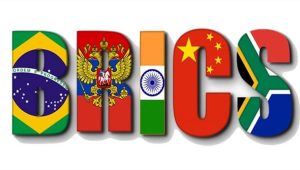
Prime Minister chaired the annual summit of the BRICS which was held virtually.
- The theme for the Summit was ‘BRICS@15: Intra-BRICS cooperation for continuity, consolidation and consensus’.
PM’s Address:
- Highlighted the achievement of several new initiatives during India’s Chairship this year (2021), i.e. an Agreement on cooperation in the field of remote-sensing satellites; a virtual BRICS vaccine Research & Development Centre; BRICS Alliance on Green Tourism, etc.
- Highlighting the leading role that BRICS countries can play in the post-Covid global recovery, Prime Minister called for enhanced BRICS cooperation under the motto of ‘Build-back Resiliently, Innovatively, Credibly and Sustainably’.
Adopted BRICS Counter Terrorism Action Plan:
- It defines the approach and actions of the BRICS countries towards areas of Counter Terrorism cooperation which includes: Countering Radicalization and Online Terrorist Threats, Border Management, Information/ Intelligence Sharing, etc.
Adopted Delhi Declaration:
- The declaration called for reforms of the principal organs of the United Nations including that of the UN Security Council (UNSC).
- It is the first time that BRICS has taken a collective position on ‘Strengthening and Reforming Multilateral Systems’.
- It also called for an “inclusive intra-Afghan dialogue” for stability in Afghanistan.
- Apart from Afghanistan, the BRICS leaders also took up the conflicts in Myanmar, Syria, the tension in the Korean peninsula, Israel-Palestine violence and other territorial disputes.
Periodic Labour Force Survey (PLFS):

The National Statistical Office (NSO) released the quarterly bulletin of Periodic Labour Force Survey (PLFS) for October-December 2020.
- This dataset differs from the Annual Report of Periodic Labour Force Survey, which covers both rural and urban areas. Unemployment data for urban areas is released quarterly.
- NSO is the central statistical agency of the Government mandated under the Statistical Services Act 1980 under the Ministry of Statistics and Programme Implementation.
Highlights of Quarterly Bulletin:
- The Unemployment rate for ages 15 and above in urban areas rose to 10.3% in October-December 2020 as compared to 7.9% in the corresponding months a year ago.
- The labour force participation rate for ages 15 and above in urban areas was 47.3% in October-December quarter of 2020, down from 47.8% in the same period a year ago.
- The Worker Population Ratio for ages 15 and above in urban areas was 42.4% in October-December quarter of 2020, down from 44.1% in the same period a year ago.
About Periodic Labour Force Survey:
- Considering the importance of availability of labour force data at more frequent time intervals, National Statistical Office (NSO) launched Periodic Labour Force Survey (PLFS) in April 2017.
- The objective of PLFS is primarily twofold: To estimate the key employment and unemployment indicators (viz. Worker Population Ratio, Labour Force Participation Rate, Unemployment Rate) in the short time interval of three months for the urban areas only in the ‘Current Weekly Status’ (CWS). To estimate employment and unemployment indicators in both usual Status and CWS in both rural and urban areas annually.
Indian citizens To Work In The Portuguese Republic:
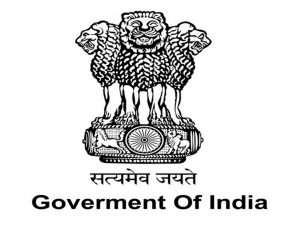
The Union Cabinet has approved the signing of an agreement on the recruitment of Indian citizens to work in the Portuguese Republic between the Government of India and Portugal.
- The present agreement would set an institutional mechanism for partnership and cooperation between India and Portugal on sending and accepting Indian workers.
Implementation Strategy:
- Under this agreement, a Joint Committee will be set up to follow up the implementation of the same.
Impact:
- Signing this agreement with Portugal will add a new destination for Indian migrant workers in an EU member nation, especially in the context of many Indian workers who have returned to India following the Covid-19 pandemic.
- It will provide new opportunities for skilled Indian workers and professionals.
- With the conclusion of this agreement, Portugal and India will have a formal arrangement for recruitment of Indian workers.
Benefits:
- Indian workers would have enhanced job opportunities to work in Portugal.
- The Government-to-Government mechanism proposed in the agreement will ensure that the movement of workers happens smoothly with the maximum support from both sides.
Swachh Survekshan Grameen 2021:

The Minister of Jal Shakti Ministry presided over the e-launch of Swachh Survekshan Grameen 2021 under Swachh Bharat Mission (Grameen) Phase -II at an event organized by Department of Drinking Water and Sanitation (DDWS).
- The Department of Drinking Water and Sanitation (DDWS) will undertake Swachh Survekshan Grameen 2021 countrywide to support acceleration of ODF Plus interventions and increase momentum for improving ODF Sustainability as well as Solid and Liquid Waste Management (SLWM) activities across the villages in the country.
- DDWS had commissioned Swachh Survekshan Grameen (SSG)on two occasions earlier in 2018 and 2019.
- As part of Swachh Survekshan Grameen 17,475 villages in 698 Districts across India will be covered. 87,250 public places namely schools, anganwadis, public health centres, haat/bazaars/religious places in these 17,475 villages will be visited for survey.
- In line with the Swachh Bharat Mission phase II program, SSG 2021 would focus on assessing ODF Sustainability & Implementation of ODF Plus in the villages.
- Many new elements have been added in the SSG 2021. These elements include – Assessment of Solid, Liquid, Plastic Waste & faecal Sludge Management Arrangements, Awareness on Menstrual Hygiene and Management & Disposal Arrangements for Menstrual Waste.
- The weightage to different elements of the SSG 2021 are as below:
- Direct Observation of sanitation in villages including HHs/public places -30%
- Citizen’s Feedback including feedback from common citizens, key influencers at the village level and from citizens online using a mobile App -35%
- Service Level Progress on sanitation related parameters -35%
Medium Range Surface To Air Missile (MRSAM) System:
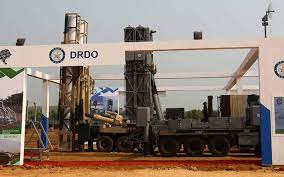
In a significant boost to India’s defence capabilities, the first deliverable Firing Unit (FU) of Medium Range Surface to Air Missile (MRSAM) System was handed over to Indian Air Force (IAF) in the presence of Raksha Mantri Shri Rajnath Singh at Air Force Station, Jaisalmer in Rajasthan on September 09, 2021.
- The MRSAM (IAF) is an advanced network centric combat Air Defence System developed jointly by Defence Research and Development Organisation (DRDO) and Israel Aerospace Industries (IAI) in collaboration with the Indian industry comprising of private and public sectors including MSMEs.
- The MRSAM system provides point and area air defence for ground assets against a wide range of threats including fighter aircraft, UAVs, helicopters, guided and unguided munitions, sub-sonic & supersonic cruise missiles etc.
- It is capable of engaging multiple targets at ranges up to 70 kms in severe saturation scenarios.
- The missile is powered by indigenously developed rocket motor and control system for achieving high manoeuvrability during the terminal phase.
- The firing unit comprises of Missiles, Combat Management System (CMS), Mobile Launcher Systems (MLS), Advanced Long Range Radar, Mobile Power System (MPS), Radar Power System (RPS), Reloader Vehicle (RV) and Field Service Vehicle (FSV).
India’s First Dugong Conservation Reserve : Tamil Nadu:
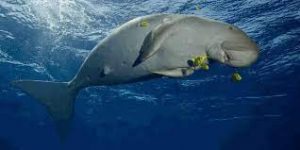
India’s first Dugong conservation reserve will be built in Tamil Nadu for the conservation of Dugong, a marine animal that has been enlisted vulnerable to extinction on a global scale by the World Conservation Union (IUCN).
- The reserve will spread over an area of 500 km in Palk Bay on the southeast coast of Tamil Nadu. Palk Bay is a semi-enclosed shallow water body with a water depth maximum of 13 meters.
- Located between India and Sri Lanka along the Tamil Nadu coast, the dugong is a flagship species in the region.
- Dugong or the sea cow is the State animal of Andaman & Nicobar Islands. This endangered marine species survive on seagrass and other aquatic vegetation found in the area.
- It is the only herbivorous mammal that is strictly marine and is the only extant species in the family Dugongidae.
- Dugongs are usually about three-meter long and weigh about 400 kg. Dugongs have an expanded head and trunk-like upper lip. Elephants are considered to be their closest relatives. However, unlike dolphins and other cetaceans, sea cows have two nostrils and no dorsal fin.
- Distributed in shallow tropical waters in the Indo-Pacific region, in India, they are found in the Gulf of Kutch, Gulf of Mannar, Palk Bay, and Andaman & Nicobar Islands.
U.S.-India Strategic Clean Energy Partnership (SCEP):

Minister of Petroleum and Natural Gas and Minister of Housing and Urban Affairs Hardeep Singh Puri co-chaired a virtual Ministerial meeting with U.S. Secretary of Energy Ms. Jennifer Granholm to launch the revamped U.S.-India Strategic Clean Energy Partnership (SCEP).
- The SCEP is launched in accordance with U.S.-India Climate and Clean Energy Agenda 2030 Partnership announced by Prime Minister Narendra Modi and President Joe Biden at the Leaders Summit on Climate held in April this year.
- The SCEP organizes inter-governmental engagement across five pillars of cooperation: (1) Power and Energy Efficiency; (2); Responsible Oil and Gas; (3) Renewable Energy; (4) Sustainable Growth and (5) Emerging Fuels.
- A new India-US Task Force on Biofuels was also announced to build on the scope of work on cooperation in biofuels sector.
- The two sides also announced rechristening of Gas Task Force to India-US Low Emissions Gas Task Force, which would continue to forge collaboration between U.S. and Indian companies on innovative projects to support India’s vision of gas-based economy.
- Both sides have initiated institutionalization of India Energy Modeling Forum with the constitution of Six Task Forces for carrying out research and modeling in different areas.
- Building on the success of the first phase, the two sides agreed to expand the scope of the work to include smart grid and grid storage as part of the second phase of the Partnership to Advance Clean Energy (PACE)-R initiative anchored on the Indian side by the Department of Science & Technology.
World’s Northernmost Island:

A team of Arctic researchers from Denmark say they accidentally discovered what they believe is the world’s northernmost island located off Greenland’s coast.
- The scientists from the University of Copenhagen initially thought they had arrived at Oodaaq, an island discovered by a Danish survey team in 1978, to collect samples during an expedition that was conducted in July.
- They instead wound up on an undiscovered island further north.
- “Island hunters” are known as adventurers whose hobby it is to search for unknown islands.
- The yet-to-be-named island is 780 meters (about 850 yards) north of Oodaaq, an island off Cape Morris Jesup, the northernmost point of Greenland and one of the most northerly points of land on Earth.
- The tiny island, apparently discovered as a result of shifting pack ice, is about 30 by 60 meters (about 100 by 200 feet) in size and rises to about three to four meters (10 to 13 feet) above sea level, the university said.
- The research team reportedly doesn’t consider the discovery to be a result of climate change and has allegedly proposed naming the island Qeqertaq Avannarleq, which means “the northernmost island” in Greenlandic.
‘Main Bhi Digital 3.0’:
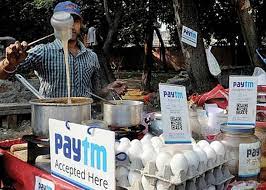
Ministry of Housing and urban Affairs (MoHUA) in collaboration with the Ministry of Electronics & Information Technology (MeitY) launched the pilot drive ‘Main Bhi Digital 3.0’ – A special Campaign for Digital Onboarding and Training for street vendors under PM SVANidhi scheme across 223 cities in the country.
- The BharatPe, Mswipe, PhonePe, Paytm, Aceware are participating in this drive to issue UPI IDs, QR code and provide digital training.
- Digital Payment Aggregators will handhold the street vendors to bring about enhanced adoption of digital transactions and behaviour change.
- To promote digital transactions instruction has been issued to the Lending Institutions (LIs) to handover a durable QR Code and train the beneficiaries for conducting digital receipt and payment transactions within a week of disbursement.
- PM Street Vendor’s AtmaNirbhar Nidhi (PM SVANidhi) was launched on June 1, 2020 as a Central Sector Scheme. The scheme facilitates affordable working capital loan of up to ₹10,000 with an interest subsidy @7% on regular repayment.
Coronal Mass Ejections:
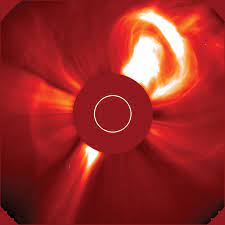
Indian Scientists, along with international collaborators, have measured the magnetic field of an eruption from the Sun’s atmosphere (solar corona), offering a rare peek to the interior of the Sun.
- Coronal Mass Ejection (CME) is one of the biggest eruptions from the Sun’s surface that can contain a billion tons of matter accelerated to several million miles per hour into space.
- Scientists from the Indian Institute of Astrophysics (IIA) studied the weak thermal radio emission associated with the erupted plasma for the first time, measuring the magnetic field and other physical conditions of the eruption.
- IIA is an autonomous institute of the Department of Science & Technology (DST), at Gauribidanur, Karnataka.
- The team studied the plasma from the Coronal Mass Ejection (CME) that happened on 1st May, 2016.
- Plasma is also known as the fourth state of matter. At high temperatures, electrons are ripped from atom’s nuclei and become a plasma or an ionised state of matter.
- The emissions were detected with the help of radio telescopes of the IIA, along with some space-based telescopes that observed the Sun in extreme ultraviolet and white light.
- They were also able to measure the polarisation of this emission, which is indicative of the direction in which the electric and magnetic components of the waves oscillate.
About the Coronal Mass Ejections:
- The Sun is an extremely active object, spewing out vast quantities of gas and plasma in many violent events.
- A class of such eruptions are Coronal Mass Ejections (CMEs).
- CMEs are the most powerful explosions happening in the solar system.
- The underlying cause of CMEs is not well understood. Astronomers agree, however, that the sun’s magnetic field plays a major role.
- Though CMEs can occur anywhere on the Sun, it is primarily those which originate from regions near the centre of the visible solar surface (called the photosphere) that are important for study, since they may propagate directly towards the Earth.
- This field of research helps to understand Space Weather.
- When a really strong CME blows past the Earth, it can damage the electronics in satellites and disrupt radio communication networks on Earth.
- When the plasma cloud hits our planet, a geomagnetic storm follows.
- A geomagnetic storm is a major disturbance of Earth’s magnetosphere (space controlled by earth’s magnetic field) that occurs when there is a very efficient exchange of energy from the solar wind into the space environment surrounding Earth.
- They can trigger intense light in the sky on Earth, called auroras.
- Some of the energy and small particles travel down the magnetic field lines at the north and south poles into Earth’s atmosphere.
- There, the particles interact with gases in the atmosphere resulting in beautiful displays of light in the sky.
- The aurora in Earth’s northern atmosphere is called an aurora borealis or northern lights. It’s southern counterpart is called an aurora australis or the southern lights.
India Rankings 2021:

Union Education Minister released the India Rankings 2021 instituted by the National Institutional Ranking Framework.
Key Highlights of India Rankings 2021:
- Indian Institute of Technology Madras retains 1st Position in Overall Category as well as in Engineering for the third consecutive year.
- Indian Institute of Science, Bengaluru tops the University as well as Research Institution category introduced for the first time in India Rankings 2021.
- IIM Ahmedabad tops in Management subject and All India Institute of Medical Sciences, New Delhi occupies the top slot in Medical for the fourth consecutive year.
- Jamia Hamdard tops the list in Pharmacy subject for the third consecutive year.
- Miranda College retains 1st position amongst colleges for the fifth consecutive year.
- IIT Roorkee takes the top slot for the first time in Architecture subject displacing IIT Kharagpur.
- National Law School of India University, Bangalore retains its first position for in Law for the fourth consecutive years.
- Colleges in Delhi dominate ranking of colleges with five colleges out of first 10 colleges from Delhi.
- Manipal College of Dental Sciences, Manipal, secure 1st position in “Dental” category.




